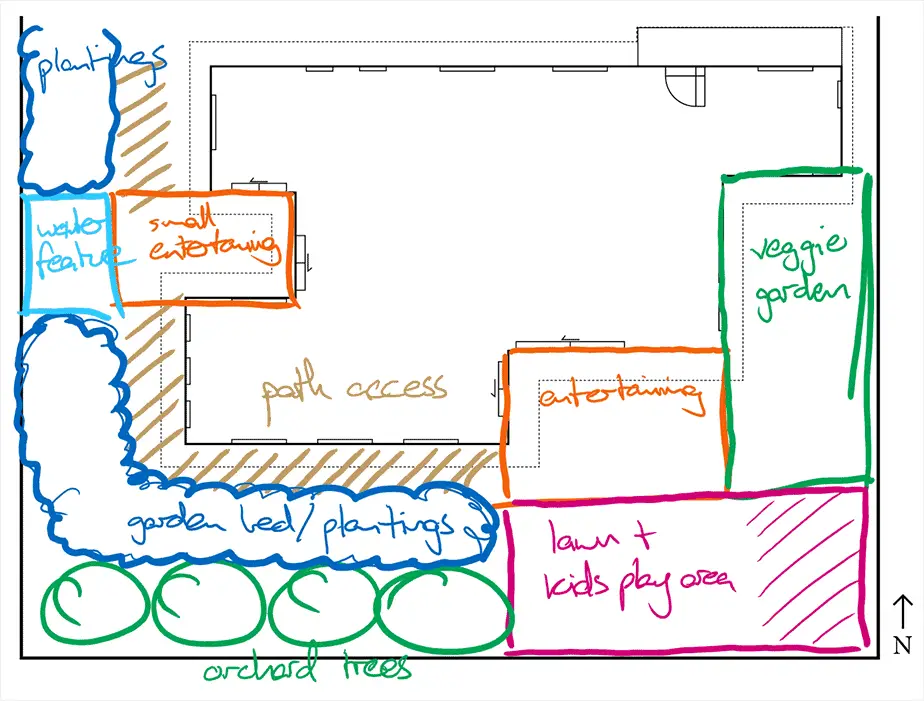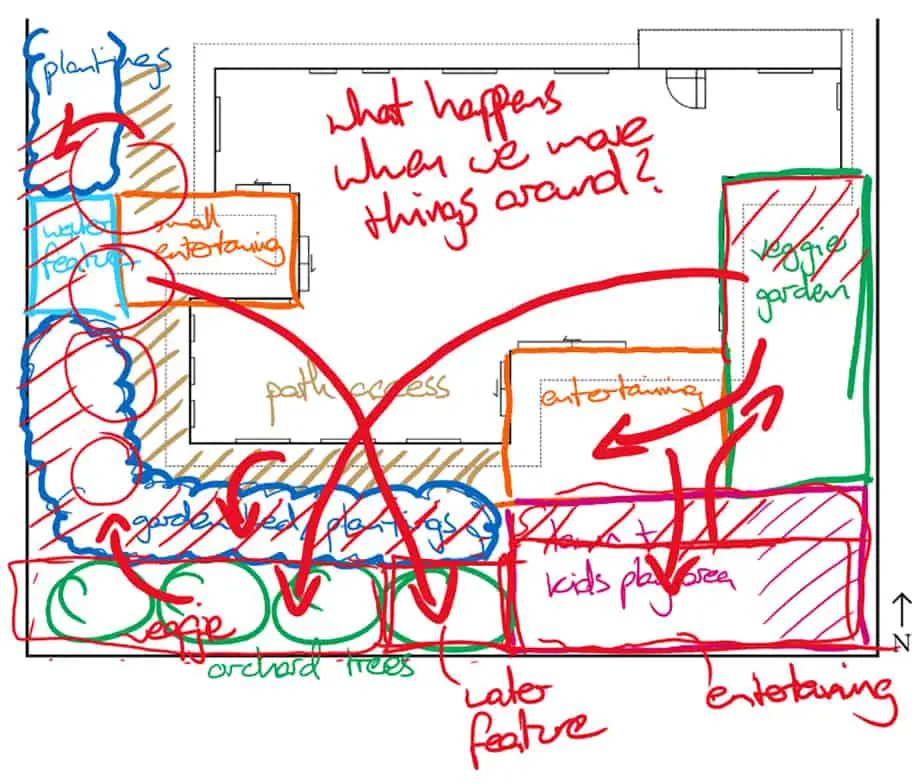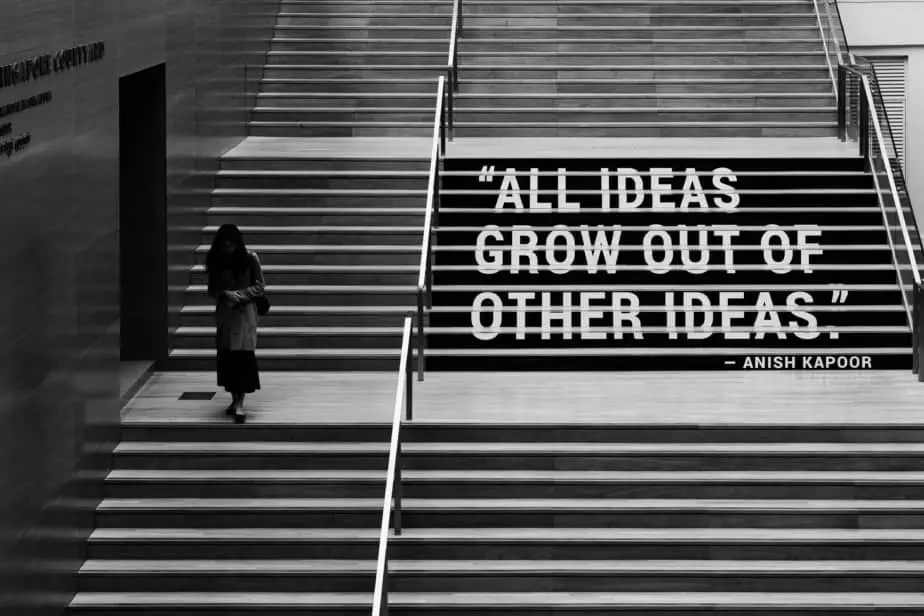When it comes to landscape design, I have one main rule I pass on to my friends and family. Despite all I’ve learnt studying my Masters and working in the industry, I believe this simple rule is what separates fantastic garden design from merely ‘good‘ garden design.
The most important rule in landscape design is to explore as many ideas as possible. Professional landscape architects and designers know the first idea they explore – or design they develop – is unlikely to be the best, or final, version.
The process of exploring ideas or concepts is called iteration and it is a core part of the landscape design process. Iteration requires the landscape designer to explore different combinations of spaces, material and plant selections, site layouts and more, across dozens of different designs, sections and sketches.
This process of iteration helps the designer eliminate poor, or unrefined, options. The more they can explore ideas, the more options they eliminate, leading to a final landscape design that is robust and perfectly suits the site and the needs of the clients and site users.
Simply “exploring ideas” sounds simple, but it requires discipline to keep iterating and working through the design process, especially when you have created some layouts and plans you like.
Landscape Design Rule #1 – Eliminate Bad Options So You’re Left With The Best
The main reason you want to explore so many different garden designs and ideas is the same reason Picasso created so many paintings. Sheer volume means, at some point, you will create something incredible.
And creating so many designs is not just about hoping you’ll ‘strike gold’. All your ‘bad’ designs tell you something important. They tell you what doesn’t work.
You prove, by the process of elimination, that your latest design – or your preferred option – is the best. It’s the best position, layout, material choice etc. for that activity, or perhaps your whole backyard.
In essence, this rule is about proving something DOESN’T work, rather than how it does.
It puts the burden on YOU (the designer) to prove, beyond doubt, that this activity, feature or other space, works better here than any other position. They are all deficient for ‘these’ reasons…

These reasons could be; the position or space is too small, not good ground conditions, neighbour oversight, not enough sun, too much sun, exposed, enclosed, too far from house, too expensive to build… the list goes on. All of these are logical reasons something wouldn’t work in a particular position.
Some activities or features may work in many different positions. Often this is due to the good qualities of the position – not the thing you are testing. This means many activities or features may be suitable for that position.
This proving by a process of elimination is central to my approach to landscape design – outlined in my guide, The Garden Design Process.
Conventional Garden Design – And Why It Doesn’t Always Work
Most people (including designers) place an activity or feature in a specific position. Then they place other areas around it. They might tweak things here or there, but often the core activities and features occupy the best positions.

Intuitively this makes sense. Place the more common and expensive things in the best locations. This may be what happens to you. But skipping the testing side means you miss opportunities.
Assuming your first choice is best can be a constraint that stifles creativity. If you take anything away from this post, make sure it’s the recognition that testing ideas means you look beyond the conventional.
You need to test and try things in different positions. To shuffle the ‘puzzle pieces’ around, beyond what you ‘think’ makes the most sense.
Remember a maths test from high school? You could have the right answer, but receive no marks, if you didn’t show your workings. And if your answer was wrong, you still got marks for showing your workings.
What I’m saying here is “show your workings”!
As Your Design Your Garden, Always Ask Yourself “Why?”
Design works in a similar way. To actually put this landscape design principle into action, you want to ask yourself “why”?
“Why do you have this here and not there?“
“Why is it like this? Why like that?“
If you were describing your design concept, layout or ideas to me, the first thing I want to know is the questions above.
If you can’t give me an explanation that proves you’ve thought about those things, it’s a fail from me. You can’t tell me your design ‘works’ and is the best if you haven’t tested other options. And considered and found their deficiencies.
This may seem counter-intuitive. Many designers will go with the most obvious solution. They will start with one main or important activity or feature, and then fit all the others in around it.
While this can produce great results, it comes at the cost of rigor. You chose good, not great – missing what your design could become.

Acting on your first impulse can prevent unique and interesting ideas from developing. You are sticking to a generic assumption about what should go where. Often based on nothing more than ‘convention’.
If you want your garden to be truly amazing and unique, begin with as broad a range of options as possible. Through the filtering process we follow, you will reduce them.
These few remaining plans are rigorous and battle tested. You know your site and environment shapes them. And they fulfil all your ‘flexible criteria’.
This is why it’s so important – and why I consider it a central landscape design principle. So always ask yourself that question:
“Why is it like this?”
Let me know if exploring beyond your first idea has helped you in your garden design journey below. And if you’d like to learn more, read my free Beginner’s 6 Step Guide, or purchase either of my ebooks – the more straightforward Landscape Design 101 Guide or my most complete guide, The Garden Design Process.

